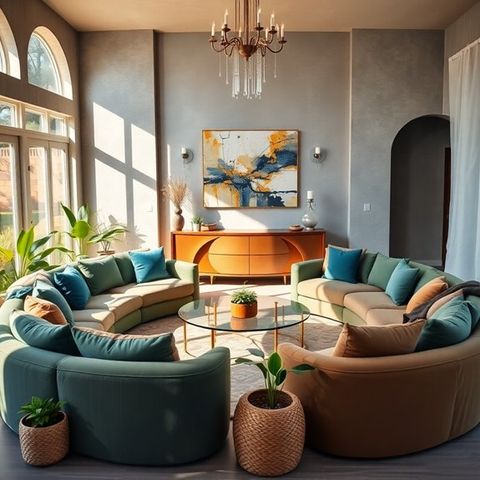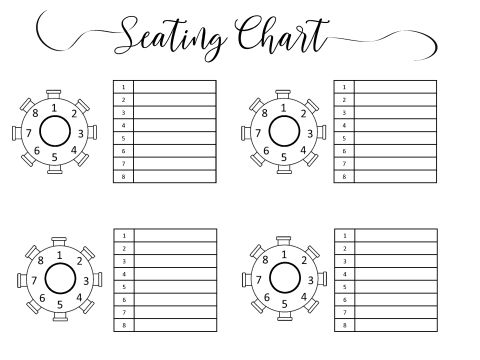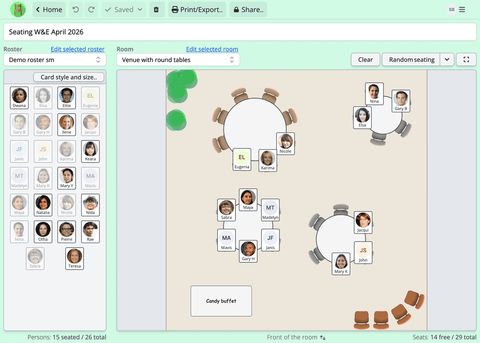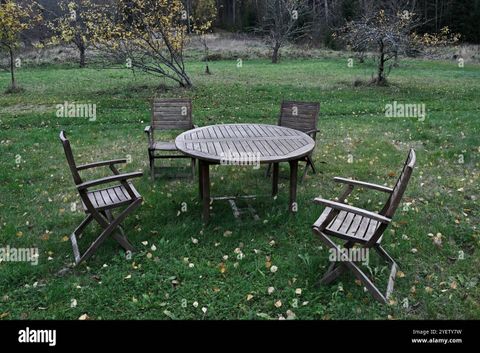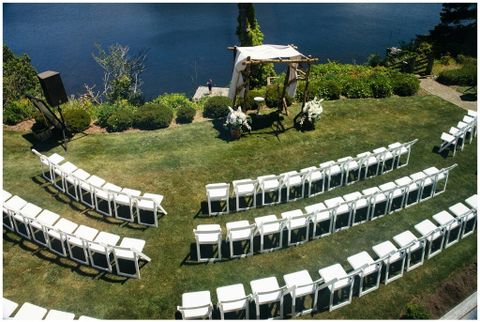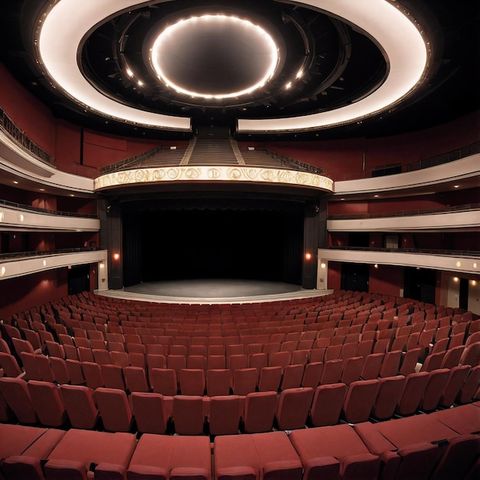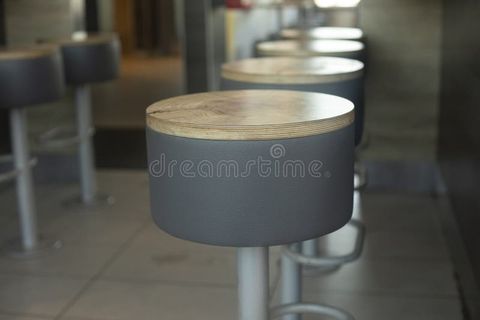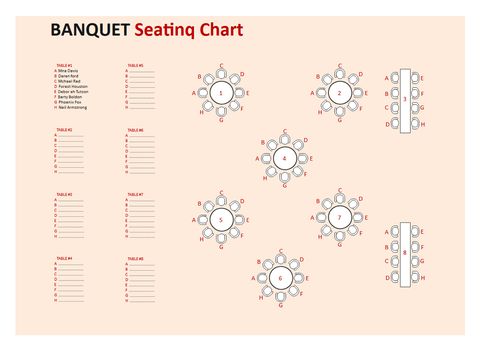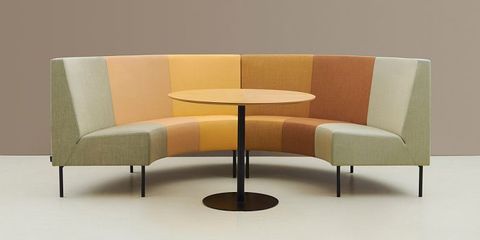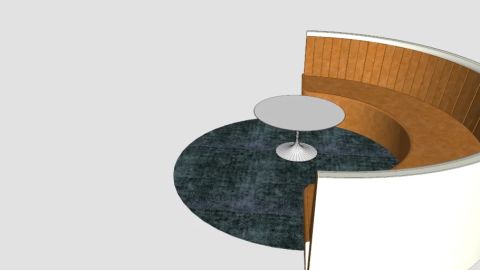Picture this: people sitting in a perfect circle, eyes meeting, voices rising and falling in harmony. This isn’t just any ordinary meeting setup. It’s a powerful design choice that transforms how groups connect, communicate, and collaborate. The circle seating layout isn’t just about aesthetics – it’s about creating genuine human connection in spaces where productivity and relationships meet.
When you think about how people interact in groups, you probably picture rows of desks or conference tables with chairs facing one direction. But what if we could fundamentally change that dynamic? What if we could rewire how people listen, speak, and feel when they gather together? The answer might lie in something as simple as arranging chairs in a circle. This classic seating layout has been used for centuries across cultures, from ancient Greek philosophy to modern corporate boardrooms. Yet its power to transform group dynamics often gets overlooked in our fast-paced digital world. The circle doesn’t just seat people – it seats possibility. It creates a space where everyone feels seen, heard, and part of the conversation. Every time someone sits in a circle, they’re choosing to engage rather than observe, to participate rather than sit back and watch. This shift in physical arrangement leads to profound changes in how groups function.
The Foundation of Connection
The circle seating arrangement is built on a fundamental truth about human interaction: we connect better when we can see each other’s faces. When people sit in a circle, their eyes naturally meet. There’s no need to turn heads or strain to hear across a table. This visual connection creates an immediate sense of inclusion. It’s not just about seeing faces – it’s about seeing the whole person. The circle allows for full body language communication, micro-expressions, and subtle cues that are lost in traditional seating setups. Consider a team meeting where everyone faces the same direction. The person at the head of the table becomes the focal point, often creating a hierarchy that affects participation. In a circle, that central position is shared equally among all participants. The result? Everyone feels like they have a stake in the conversation. This is particularly important in diverse groups where some individuals might naturally defer to others. The circle breaks down those invisible barriers that keep some voices from being heard.
Breaking Down Barriers
Traditional seating arrangements often unintentionally create power dynamics that can stifle creativity and honest dialogue. When people sit in rows facing a central speaker, there’s always someone who feels like they’re in the ‘back’ of the room. They might feel less important or less involved in the conversation. In contrast, circle seating eliminates these positional hierarchies. Everyone is equidistant from the center, which means everyone is equally positioned to contribute. This equal positioning is more than just physical – it’s psychological. It helps people feel that their input matters, regardless of their role or seniority. The circle also encourages active listening because people can’t avoid eye contact with others. They must engage with what everyone else is saying. This creates a different kind of energy in the room – one that’s more collaborative and less transactional. Imagine a brainstorming session where everyone can see each other’s reactions to ideas. The energy shifts from individual performance to collective creation. People feel safe to share wild ideas because they know their colleagues are engaged and supportive.
Enhancing Communication Flow
Communication in a circle moves differently than it does around rectangular tables. In a circle, conversation flows more naturally between participants. There’s no need to pass notes or lean over to talk to someone across the table. Everyone can easily respond to the person speaking, or jump into the conversation without having to get attention. This fluidity makes discussions more dynamic and spontaneous. The circle also helps with managing speaking time more fairly. In traditional meetings, people might dominate conversations while others struggle to get a word in. In a circle, speakers naturally become more aware of others’ need to participate. The visual cues from other participants help them gauge when to pause or invite others to join in. Think about a project planning session where everyone can see who’s waiting to speak. The circle naturally creates a rhythm where people take turns, but also support each other in expressing their thoughts. This makes meetings feel less like lectures and more like collaborative conversations. The circle also helps with conflict resolution. When disagreements arise, people can see each other’s facial expressions and body language, which helps prevent misunderstandings from escalating.
Cultural and Historical Roots
The circle seating arrangement isn’t new – it’s ancient. Cultures around the world have used circles for gatherings, ceremonies, and decision-making for thousands of years. Native American councils, Greek philosophical discussions, and medieval European gatherings all relied heavily on circular arrangements. These traditions weren’t accidental – they reflected deep understanding of how human groups work best. In many indigenous cultures, the circle represents unity, wholeness, and the interconnectedness of all things. This symbolism carries over into modern group settings, where people unconsciously feel more connected when arranged in circles. The circle has also been used in religious contexts for centuries. Prayer circles, meditation groups, and spiritual gatherings often use this arrangement because it promotes a sense of community and shared purpose. Even today, when we look at the design of many modern meeting rooms, we see echoes of these ancient principles. The circle reminds us that effective group interaction has always been about bringing people together, not separating them. It’s a universal symbol that transcends cultural boundaries and speaks to our basic human need for connection.
Practical Implementation Tips
Putting circle seating into practice requires thoughtful consideration. First, you need to ensure there’s enough space for everyone to move comfortably. A circle works best when people can sit close enough to hear each other without straining. You’ll also want to consider the size of your group – circles work well for groups of 6 to 12 people, though larger groups can still benefit from the arrangement if you break into smaller circles. Lighting plays a crucial role too. Make sure everyone’s face is well-lit so that non-verbal communication remains effective. For larger groups, you might want to consider using a circle within a circle or having multiple smaller circles. The key is maintaining that sense of inclusion. Don’t forget about practical details like ensuring everyone has access to necessary materials. Some people might need to reach across the circle to access supplies, so plan accordingly. It’s also helpful to establish some ground rules about participation. Since everyone is equally positioned, it’s important to encourage everyone to speak up and contribute. The circle creates a natural environment for sharing, but it still needs active facilitation to ensure all voices are heard.
Benefits Beyond the Meeting Room
The advantages of circle seating extend far beyond formal meetings. In educational settings, students in circle arrangements often show increased engagement and better retention of material. The visual connection helps teachers understand student reactions quickly, leading to more responsive teaching. In therapy and counseling sessions, circles provide a safe space for people to express themselves without feeling judged. The equal positioning removes the typical power imbalance between therapist and client. Even in informal settings like family dinners, circle arrangements can improve communication and reduce conflicts. When people sit in a circle, they’re more likely to share personal stories and feelings. This creates stronger bonds and better understanding between family members. The circle also supports creative collaboration. Artists, writers, and designers often find that working in circles generates more innovative ideas because everyone feels comfortable sharing their thoughts. The visual feedback loop keeps energy high and ideas flowing. The circle becomes a catalyst for creativity, not just a seating arrangement. It’s a reminder that when we arrange ourselves in ways that promote connection, we open ourselves up to possibilities we never considered before.
The circle seating layout isn’t just a trendy alternative to traditional conference tables. It’s a deliberate choice to create environments where human connection thrives. Every time we arrange people in circles, we’re making a statement about how we want to interact – with respect, equality, and genuine engagement. This simple arrangement transforms not just how groups sit, but how they think, feel, and work together. The circle shows us that sometimes the most powerful innovations come from returning to basics. It reminds us that the best group interactions happen when we remove barriers and create spaces where everyone belongs. Whether you’re running a business meeting, facilitating a workshop, or just gathering friends for dinner, consider the circle. It might just change everything. The evidence is clear – when people sit in circles, they communicate better, connect deeper, and create more meaningful outcomes. It’s not about perfection or fancy equipment – it’s about putting people first. The circle proves that sometimes the simplest solutions are the most revolutionary. So next time you’re planning a group gathering, remember that the way you arrange chairs might be the difference between a good meeting and a great experience. The circle waits patiently, ready to transform any group interaction into something more human, more inclusive, and more powerful.

